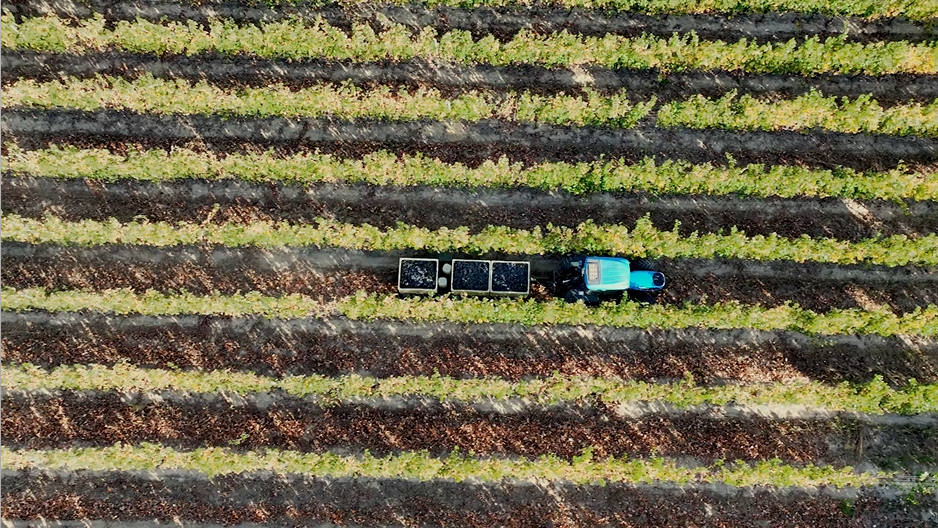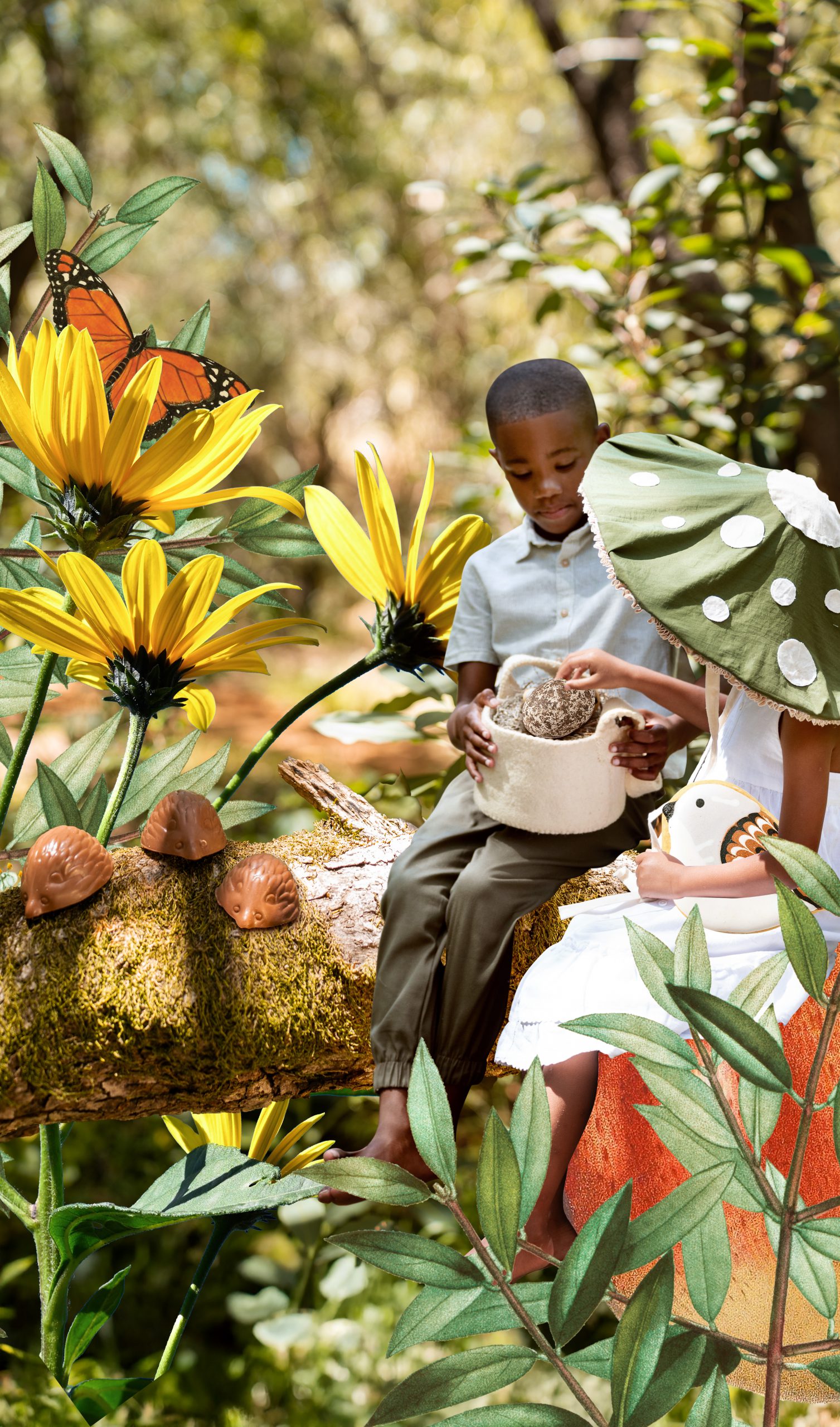Buzzing News Vol. 5
May 20th, 2024HAPPY WORLD BEE DAY!
Monday, 20 May 2024
A week in the life of Babylonstoren’s VIP garden workers, by our resident beekeeper and entomologist, Arné Stander.

Overview
We’ve had little rain over the past few weeks. Although night temperatures are dropping, day temperatures still range from mid to high 20’s. I inspected the hives at Soetdoring camp. Some supers showed a lot of activity, with honey being present. I will give the bees a few more weeks to cap more of the honey – while the warmer weather lasts – before harvesting the frames.
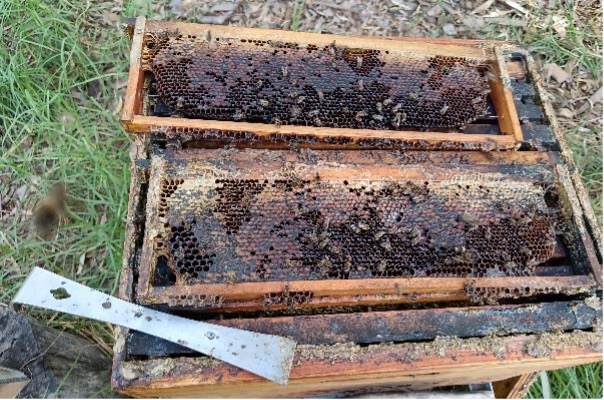
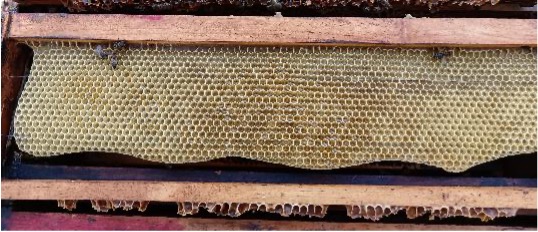
One hive showed honey but also newly built wax comb on the wax sheets. I will let these carry on until it becomes colder. Then they will be put outside in the apiary, allowing the bees to clean the frames. The empty supers will be placed in the freezer for a few days, killing off potential eggs of wax moth and black hive beetle. The supers will then be sealed in bags and stored for the new season in spring. Frames with newly built comb will give the bees an advantage at the start of the new season.
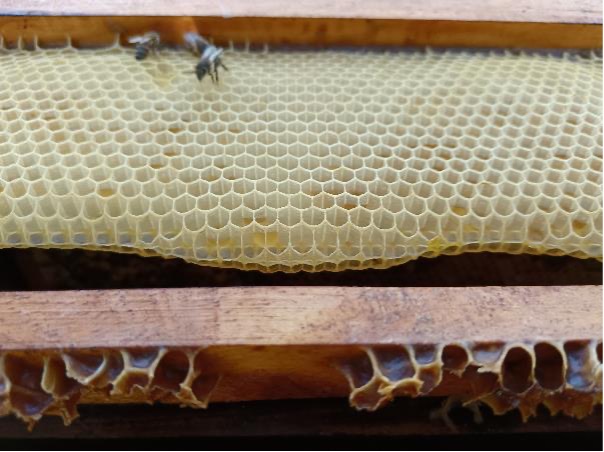
Two hives had no activity in their supers. The foundation sheets had not been used for new comb. The bees should have worked harder to increase the hive temperature. As this is wasted space, the supers were removed and placed outside for the bees to clean any stickiness before storage. With no new wax comb, there was no threat of wax moth and black hive beetle.
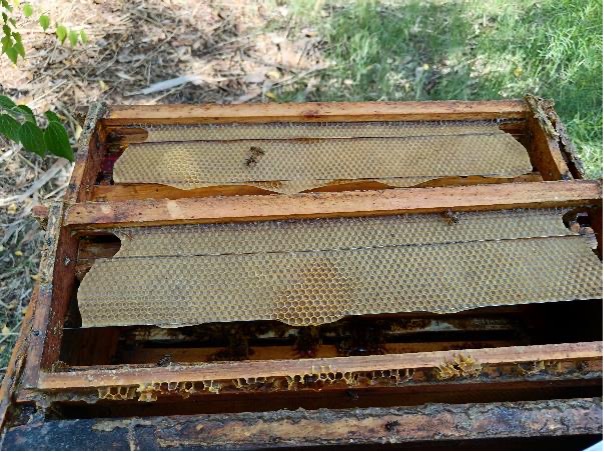
I closed the extra gap between the brood box and the super on all the hives.
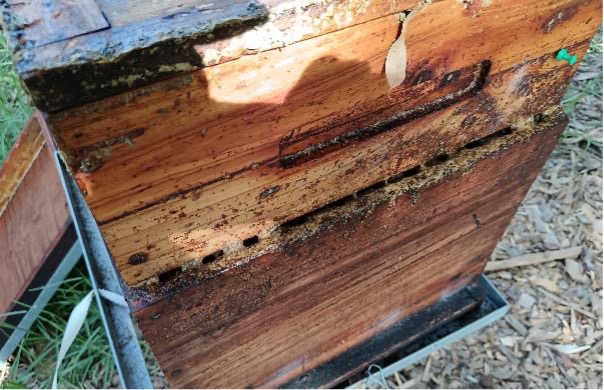
With the gap closed, the hives have minimal openings, which makes it easier to maintain their temperature.
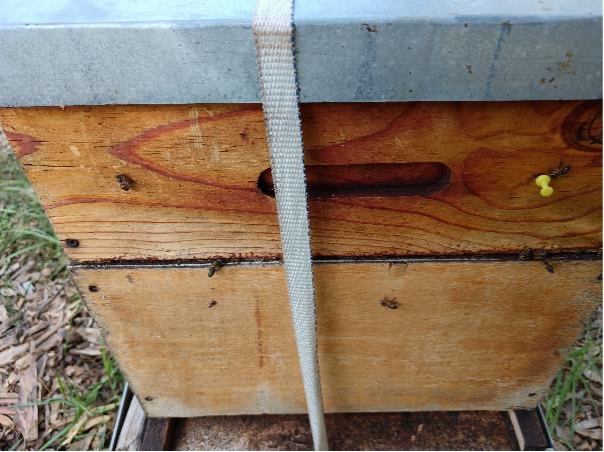
One of the empty beehives has a nest of the European paper wasp, Polistes dominula, attached to the bottom section of its brood frames. The wasps enter and exit through an opening on the right-hand side of the hive. Wasps are quite inactive when temperatures drop. However, these wasps are still active and quite abundant.
I am keeping this nest as I want to monitor their activity. Having a nest in an empty beehive could be a significant advantage, as it is a closed cavity that radiates heat from the sun. Thus, the climatic conditions might be superior to those of nests found under roof eaves.
I used the bee smoker to test for activity and the moment I puffed smoke into the hive, the wasps emerged. However, they did not attack me, and sat in front of the hive. There were many wasps present, showing that this nest is still producing workers.
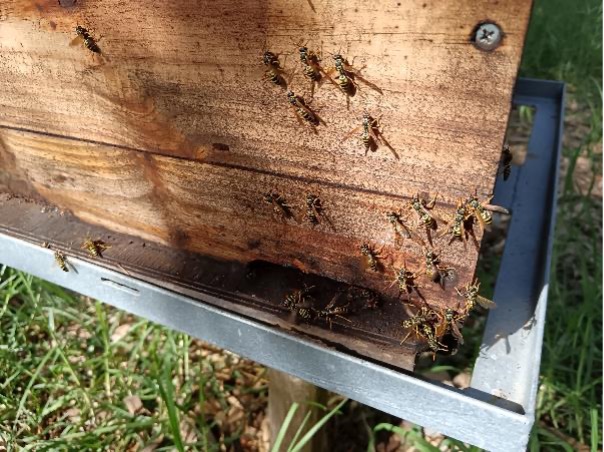
It looks strange to see paper wasps emerging from the entrance of a beehive. I will continue to monitor their activity.
Experimental setup
I set up an experiment at one beehive to test all the equipment. The equipment consists of a bee counter, a hive heart, two trail cameras and a TinyTag weather station.
Bee counter: Automatically counts the number of bees moving in and out of the hive through the twelve channels available to them. The device is powered by a solar panel and battery and measures the bees’ foraging activity.
Hive heart: A small heart-shaped device to measure the internal hive temperature (°C) and humidity (%). It fits on top of the frames, underneath the inner lid, and is powered by a CR2032 lithium battery.
Trial cameras: Two cameras mounted on a stand facing the hive. One camera points towards the entrance of the hive. The other towards the ground in front of the hive. The cameras will detect the movement of the German wasps, Vespula germanica, detecting signs of predation and scavenging.
TinyTag Plus2: This device measures the ambient temperature (°C) and relative humidity (%). Both variables will influence the foraging activity of the bees and wasps.
Below is the bee counter. I am grateful for Louis from the Maintenance team, who modified the entrance so the bees would enter and exit through the bee counter.
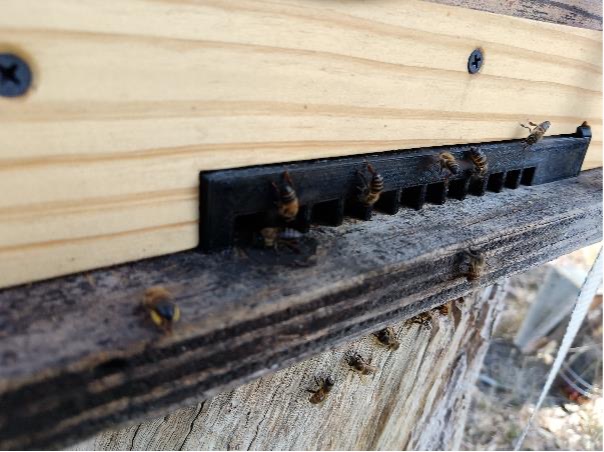
The hive heart that measures the temperature and humidity inside the hive. If conditions are not optimal inside the hive, it could explain a variation in foraging activity.
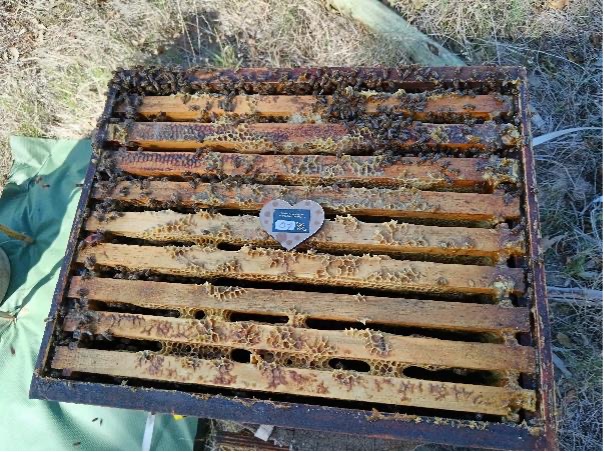
The trial cameras in their locked steel cases. To combat potential theft, the brackets are mounted to a wooden pole set in a cement bucket to add weight to the camera station. Jaco and Byron of the Maintenance team helped with the camera installation. The yellow device is the weather station.

The photo below shows the overall setup. Placing a green weeding mat on the ground as background will make it easier for the camera to capture the scavenging activity of wasps.
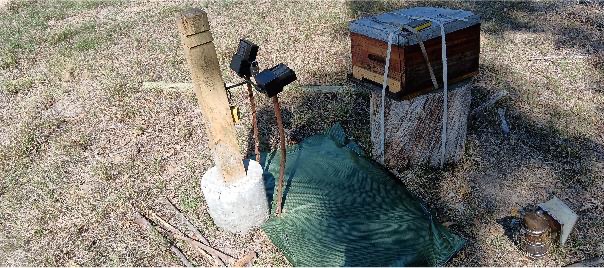
This apiary contains a hive with a wasp nest, which I am keeping as an experiment.
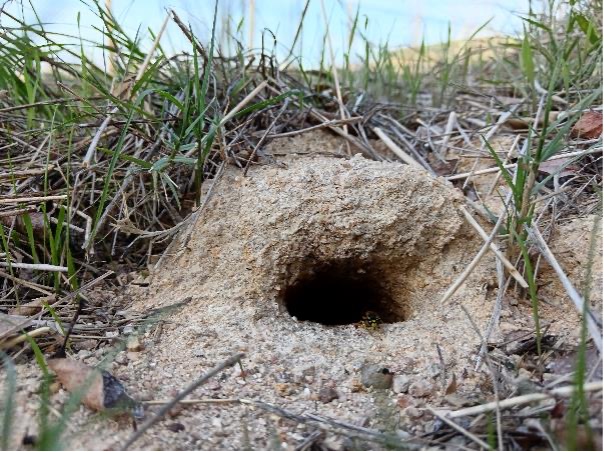
We don’t know what the German wasps are doing at our Cape honeybee hives. The wasps could be collecting deceased honeybees in front of the hives (scavenging), or they could be catching live honeybees at the hive entrance (predation). This experiment will give us a clearer indication. With recent research on the food sources of German wasps, 10% was honeybees, and 50% was flies. 10% might sound insignificant, but for any one species, it is a substantial chunk of the pie.
One morning this week, while the honeybees were quite inactive, the wasps were busy searching for food in the apiary. I saw two wasps, one of which attacked a live bee. This bee was probably outside overnight, as it was too cold to put up a fight. This happened on the foot stand of the camera station.
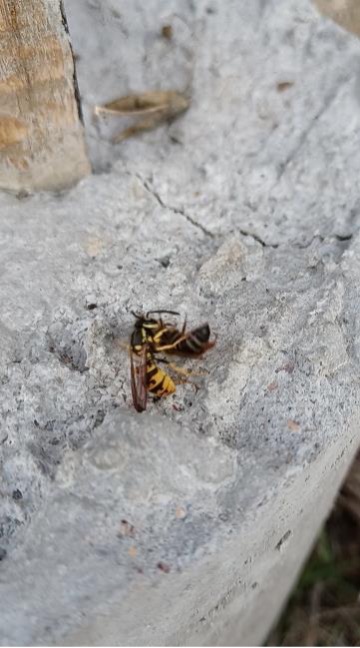
The other wasp flew from the ground and stationed himself in front of the hive. I had a closer look. It was indeed the thorax of a honeybee.
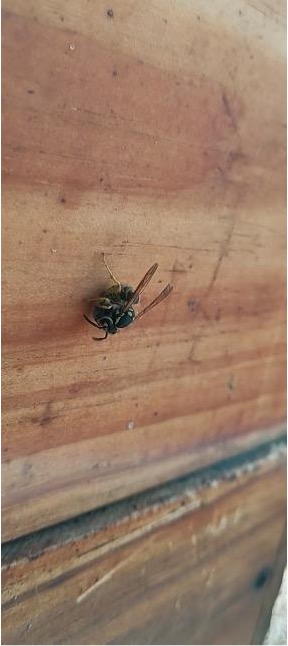
I am hoping the cameras will deliver results. They will record videos twice daily, from 8:00 to 8:30 and again from 12:00 to 12:30, creating one-minute clips with a one-minute delay between takes.
Final remarks
Today we celebrate World Bee Day and on Friday 24 May, we are hosting a bee and honey workshop with Natasha Lyon. Exciting bee times!
BUZZ WORDS
Super - Any hive body, usually a smaller box, used for the storage of honey which the beekeeper intends to harvest. Normally it is placed above the brood chamber(s). Supers are typically medium or shallow-sized boxes.
Apiary - Colonies, hives, and other equipment assembled in one location for beekeeping operations.
Beehive - An artificial cavity for a bee colony to live in, usually a box or boxes with movable frames.
Brood - Immature bees that are still inside their cells. Brood can be in the form of eggs, larvae, or pupae of different ages.
Capped honey – When bees cover their honey with wax, much like putting a lid on it.
Queen - A female bee with a fully developed reproductive system. Larger and longer than a worker bee.

